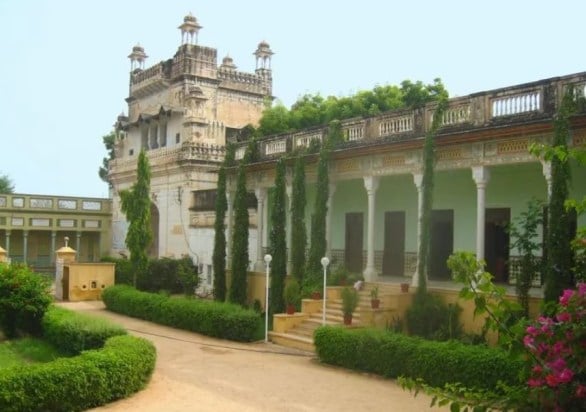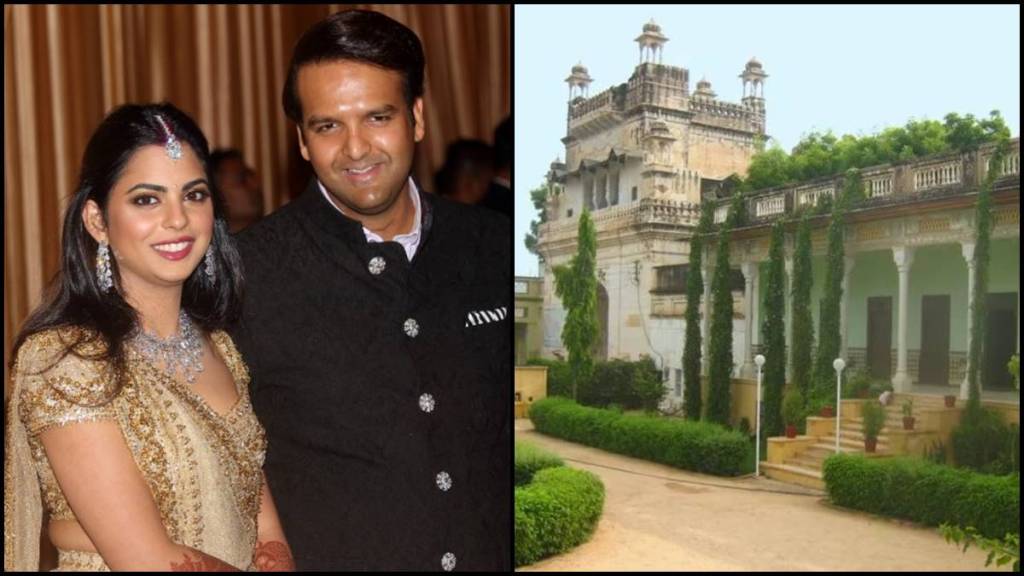Isha Ambani, daughter of India’s richest man Mukesh Ambani, tied the knot with Anand Piramal, son of the renowned businessman Ajay Piramal. This union brought together two powerful families and linked Isha Ambani to the small yet significant town of Bagar in Jhunjhunu district, Rajasthan. Bagar, though modest in size, is known for its historical havelis and rich heritage. Anand Piramal’s ancestral home, located in this town, plays a central role in the Piramal family’s legacy, making Isha the ‘bahu’ (daughter-in-law) of this culturally rich village.
The Piramal Family’s Strong Roots in Bagar
Bagar, a quaint town in Rajasthan, holds deep significance for the Piramal family. Despite their current residence in Mumbai, the Piramals maintain a strong connection to this town, regularly visiting to honor their roots. The family has left an indelible mark on Bagar, dedicating over 500 bighas of land to schools, colleges, and hospitals. These contributions highlight their commitment to the town’s development, even though their business empire has long since moved to Mumbai’s financial hub.
The friendship between the Ambani and Piramal families spans more than four decades, and the marriage of Isha and Anand cemented this bond. The Piramal Group, now valued at over Rs. 67,000 crores, traces its origins to Anand’s grandfather, Seth Piramal Chaturbhuj Makharia. In 1920, Makharia moved to Bombay (now Mumbai) from Bagar with just Rs. 50, embarking on a journey to transform his family into one of India’s most successful business dynasties.
Piramal Haveli: A Blend of Heritage and Grandeur
At the heart of Bagar lies the iconic Piramal Haveli, a lavish mansion that stands as a symbol of the Piramal family’s heritage. Built in 1928, this haveli is a testament to the family’s wealth and artistic taste. The architecture of the building is remarkable, featuring a large open garden and two grand pillared courtyards adorned with colorful frescoes. These frescoes depict a unique blend of traditional and modern elements, including flying angels, airplanes, and gods in motor cars—reflecting the British influence in Jaipur during the early 20th century.

The gate of the haveli, a prominent feature, was originally constructed by Seth Piramal to welcome the Maharaja of Jaipur on elephant back, adding to the mansion’s historical allure. Though it has been converted into a heritage hotel, allowing visitors to experience its splendor, the haveli remains under the ownership of the Piramal Group, preserving its family legacy.
Seth Piramal Chaturbhuj Makharia: A Visionary Trader
The story of the Piramal family’s rise begins with Seth Piramal Chaturbhuj Makharia (1892-1958), whose entrepreneurial spirit laid the foundation for their wealth. Makharia’s business acumen flourished in Bombay, where he traded in commodities such as cotton, opium, and silver. His success in these industries helped establish the family’s fortune, which they reinvested into their ancestral town of Bagar, further strengthening their ties to the region.
Bagar’s Historical Connection to Rajputana
Bagar is not just a town associated with the Piramals—it holds a deep historical connection to Rajasthan’s Rajputana legacy, particularly the Shekhawat Rajputs. The region, now known as Shekhawati, was once ruled by the Shekhawat Rajput clan between the 15th and 18th centuries. Historians note that Rao Shekha, who reigned from 1433 to 1488, was instrumental in shaping the cultural and political landscape of the region. His descendants continued to rule over areas such as Sikar, Jhunjhunu, and Churu, giving the town of Bagar a rich Rajputana history.
A Legacy of Wealth, Culture, and Tradition
Isha Ambani’s marriage to Anand Piramal links her to a family with a deep cultural and historical legacy in Bagar. The Piramal Haveli, with its grandeur and historical significance, stands as a symbol of the family’s wealth and influence in the region. Despite their global business empire, the Piramal family remains connected to their roots in Rajasthan, contributing to the town’s development and preserving its historical significance.








